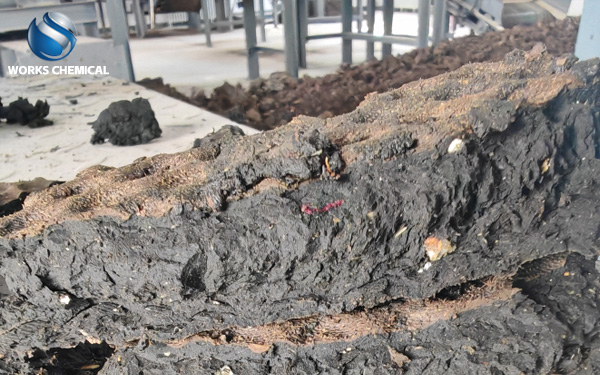
In view of the problem of printing and dyeing sludge slime filter cloth and the press mud is not formed, the following agents can be selected for treatment:

A, inorganic flocculant
Inorganic flocculants such as aluminum sulfate, ferric chloride, ferrous sulfate, polyaluminum chloride (PAC), polyaluminum sulfate, etc., such agents can dissociate metal ions in water and form hydroxide colloid, which has the effect of neutralizing the surface charge of sludge particles, compressing the double electric layer, adsorption bridging, etc., thereby helping the sludge particles gather to form a larger floc. Facilitate subsequent press filtration treatment.
Two, organic flocculant
Organic flocculants such as polyacrylamide (PAM) and its derivatives, the molecular chain of this class of agents contains a number of polar groups, can interact with a variety of substances on the surface of the sludge particles, forming hydrogen bonds or ionic bonds, etc., so as to enhance the cohesion between the sludge particles and improve the dehydration performance of the sludge. PAM agents are especially used in the treatment of printing and dyeing sludge because of their good flocculation effect and adaptability.
Three, composite flocculant
Composite flocculant is a new type of agent prepared by combining inorganic flocculant and organic flocculant, which combines the advantages of inorganic and organic flocculant, with wider adaptability, stronger flocculation ability and higher dehydration efficiency. The use of composite flocculants can more effectively solve the problem of printing and dyeing sludge sticky filter cloth and press mud is not formed.
Four, sludge conditioner
Sludge conditioner is a reagent specially used to improve the dewatering performance of sludge, which can improve the filtration efficiency of sludge by changing the particle structure of sludge and reducing the viscosity and moisture content of sludge. The sludge conditioner also has a good application effect in the treatment of printing and dyeing sludge, which can effectively solve the problem that the sludge sticks to the filter cloth and the mud is not formed.
Suggestions for drug selection
Selection according to sludge properties: different printing and dyeing sludge has different properties, such as sludge pH value, oil content, organic content, etc., should be selected according to the specific properties of the sludge suitable agents.
Dosage control: the dosage of the agent has a great impact on the treatment effect, and excessive or insufficient will affect the dewatering performance of the sludge. Therefore, the optimal dosage of the agent should be determined by small test before use.
Combination of reagents: inorganic flocculants and organic flocculants can be used together to give play to their respective advantages and improve the dehydration effect of sludge.
Pay attention to the environmental protection of the agent: the selected agent should have good environmental protection performance and will not cause secondary pollution to the environment.
In summary, inorganic flocculant, organic flocculant, composite flocculant or sludge conditioner can be used for treatment in view of the problem of printing and dyeing sludge sticky filter cloth and non-forming mud. When selecting the agent, comprehensive consideration should be made according to the specific nature of the sludge, the dosage control of the agent, the combination of the agent and the environmental protection of the agent.